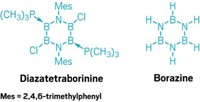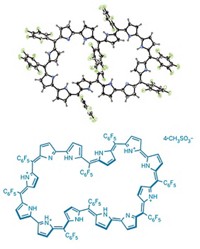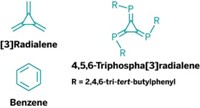Advertisement
Grab your lab coat. Let's get started
Welcome!
Welcome!
Create an account below to get 6 C&EN articles per month, receive newsletters and more - all free.
It seems this is your first time logging in online. Please enter the following information to continue.
As an ACS member you automatically get access to this site. All we need is few more details to create your reading experience.
Not you? Sign in with a different account.
Not you? Sign in with a different account.
ERROR 1
ERROR 1
ERROR 2
ERROR 2
ERROR 2
ERROR 2
ERROR 2
Password and Confirm password must match.
If you have an ACS member number, please enter it here so we can link this account to your membership. (optional)
ERROR 2
ACS values your privacy. By submitting your information, you are gaining access to C&EN and subscribing to our weekly newsletter. We use the information you provide to make your reading experience better, and we will never sell your data to third party members.
Synthesis
Silicon Radicals Double Up
Using carbon analogs as a guide, a Japanese team has synthesized the first stable silicon diradical species
by Stephen K. Ritter
April 18, 2011
| A version of this story appeared in
Volume 89, Issue 16
Using carbon analogs as a guide, Takeshi Nozawa, Akira Sekiguchi, and coworkers of Japan’s University of Tsukuba have synthesized isomeric p- and m-disilaquinodimethanes, the latter of which represents the first stable silicon-based diradical species (J. Am. Chem. Soc., DOI: 10.1021/ja2014746). Organic free radicals featuring an unpaired electron on a carbon atom are used in a variety of chemical reactions, but versions with two or more radical centers, of interest for making organic magnetic materials, are more challenging to make and stabilize. Isolable silicon, germanium, tin, and lead single radicals have also been reported, but oligoradicals containing these elements have remained elusive until now. Sekiguchi’s group used p- and m-quinodimethane derivatives as model compounds: The para isomer takes on a quinonoid form and has a nonradical singlet ground state, whereas the meta isomer has a biradical triplet ground state. When the researchers made the silicon analogs, the p- and m-disilaquinodimethanes, they observed the same behavior. In the para isomer, conjugated Si=C bonds form, but in the meta isomer, the silicon 3p and carbon 2p orbitals can’t overlap, preventing π bonding. The two compounds have noticeably different spectra—the para isomer is purple and the meta isomer is yellow—and display different reactivities.





Join the conversation
Contact the reporter
Submit a Letter to the Editor for publication
Engage with us on Twitter